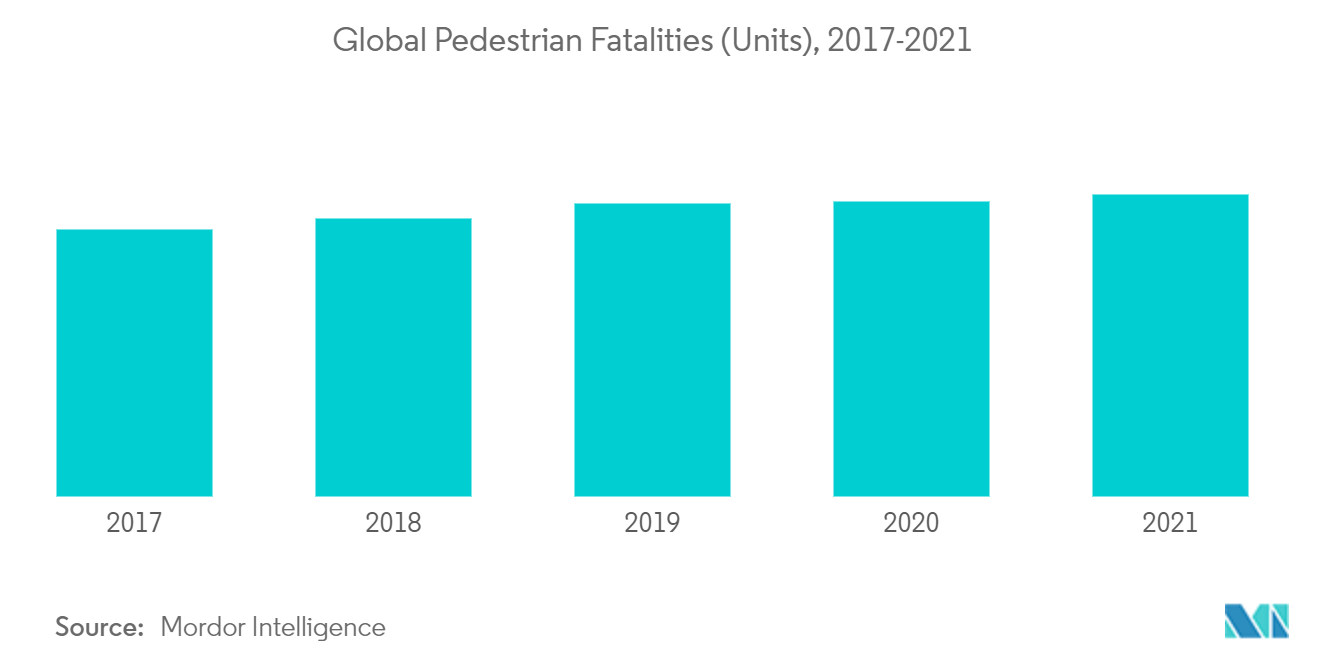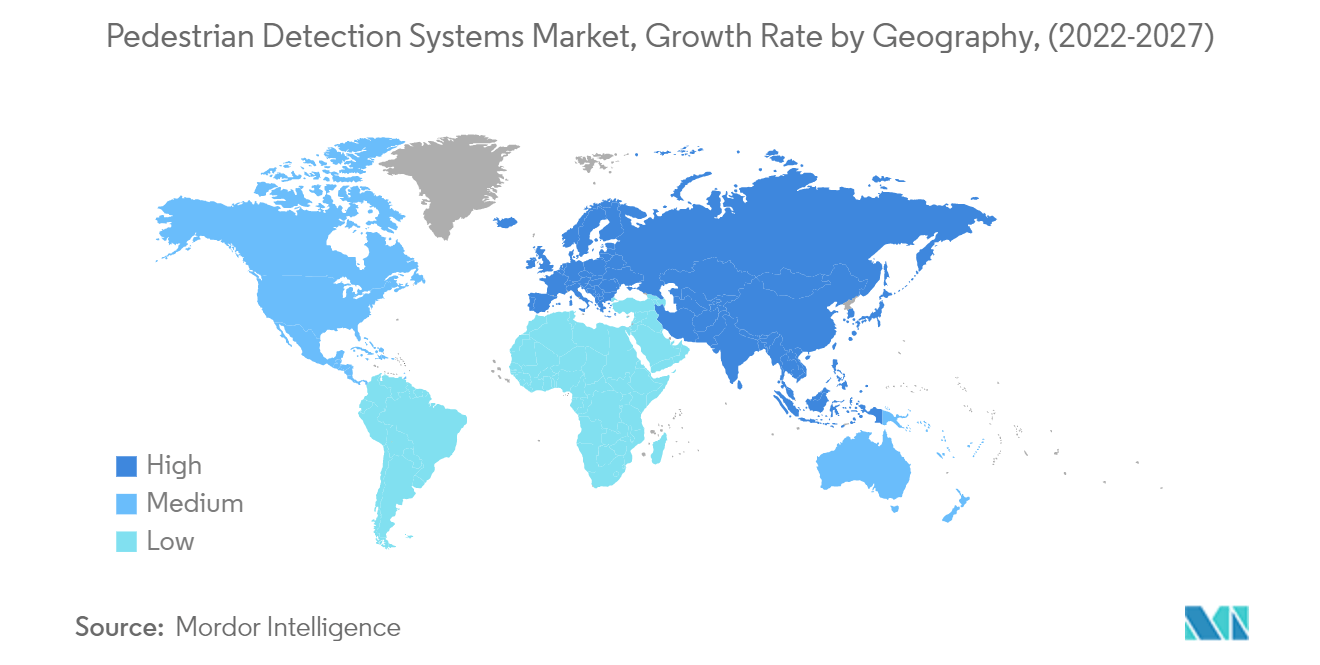Market Trends of Global Pedestrian Detection Systems Industry
This section covers the major market trends shaping the Pedestrian Detection Systems Market according to our research experts:
Increase in the Number of Road Fatalities
The rise in the number of accidents, resulting in loss of lives and properties across the world, is being considered one of the major factors driving the demand for and development of advanced automobile safety systems. As consumers are gaining awareness about the advanced safety features and technologies, they are indicating an interest in improving their vehicles' safety systems.
As per the WHO, more than half of all road traffic deaths are among vulnerable road users, such as pedestrians, cyclists, and motorcyclists. Deaths of pedestrians and cyclists accounted for 26% of all deaths, while that of those using motorized two- and three-wheelers accounted for 28%.
Thus, the number of pedestrians hit and killed has been continually increasing. For instance -
- According to a preliminary estimate published by the Governors Highway Safety Association (GHSA), in the first half of 2021, in the United States, 2957 pedestrians were killed in road fatalities, a 54% increase, compared to 2020.
- Five states in the country, namely, Arizona, California, Florida, Georgia, and Texas, accounted for 46% of all pedestrian deaths, despite representing only 33% of the US population, according to Census data. California recorded the largest number of pedestrian deaths, at 432.
- According to National Highway Traffic Safety Administration, 42,915 people died in motor vehicle traffic crashes in 2021, a 10.5% increase from the 38,824 fatalities in 2020.
- Regions, such as Europe and North America, are developed, and with the increase in vehicle sales, more customers are opting for trending ADAS features in their vehicles, owing to the need for safety and comfort features.
Initially, the majority of the consumers did not adopt these systems due to the high cost and lack of awareness. However, with the new government regulations in place and the proven safety benefits, these systems have gained consumer interest. The ongoing installations are being done by both OEMs and aftermarkets, to facilitate end users with ADAS features.

Europe is Expected to Witness High Adoption Rate
In 2021, around 25% of all people killed on roads were pedestrians. In general, pedestrian fatalities have decreased at a lower rate than for other road users (by 15% from 2010 to 2020, compared to a total fatality decrease of 20%).
The European Commission has made it mandatory for all new cars to be equipped with safety equipment by 2021. The commission wants to fit all the 11 various ADAS features designed to prevent or mitigate accidents. The European Union anticipates that the addition of these 11 ADAS safety features may not only save over 7,000 lives across Europe but may also prevent 38,000 serious injuries between 2020 and 2030.
- In March 2019, EU institutions agreed on the revision of the General Safety Regulation that may make many vehicle safety measures mandatory from 2022 in vehicles across EU countries. The new proposal is expected to save over 25,000 lives and prevent 140,000 serious injuries by 2038, in line with 'Vision Zero,' which aims to achieve the target of zero fatalities and serious injuries by 2050.
The vehicle safety measures that have direct relevance to the cyclists' and pedestrians' safety include Intelligent Speed Assistance, Autonomous Emergency Braking (AEB) for the car to pedestrian/cyclist and HGV/truck 'VRU detection' assist, which may warn the driver if a pedestrian or cyclist is in the blind spot of a large vehicle (in the review of the General Safety Regulation and the Pedestrian Safety Regulation, under the Third 'Europe on the Move' set of actions).
In Europe, Germany is expected to be one of the major markets. With the growing focus on both passengers' safety and pedestrians' and cyclists' safety, the demand for advanced driver's safety assistance systems of collision warning systems has been continually increasing.
- In July 2022, the Federal Statistical Office reported, 321 people were killed in road traffic accidents in Germany. An increase in the number of death was the result of the rise in deaths of cyclists and motorcyclists. However, the country witnessed a decline in the number of pedestrian deaths by approximately 6%.
Irrespective of the decline in the number of pedestrian deaths, the country has been striving to further reduce pedestrian and cyclist fatalities, and the announcement of the revision of the General Safety Regulations may further aid in reducing the fatalities.
To reduce the number of accidents and fatalities, the department of transportation has made it compulsory to incorporate a forward collision avoidance technology systems in vehicles from 2017 onward. This system is a combination of long-range detection (e.g., adaptive cruise control), short-range and wide-angle systems (e.g., pedestrian detection), and autonomous emergency braking. This regulation is anticipated to drive the market for pedestrian detection systems in the country during the forecast period.


